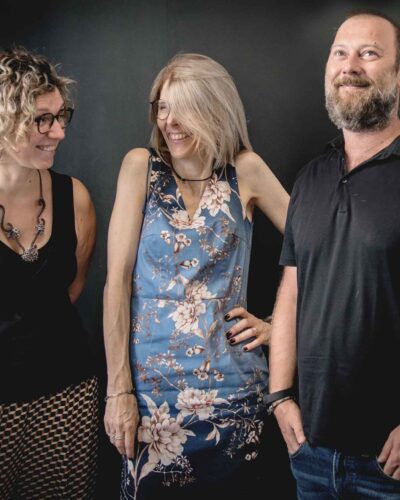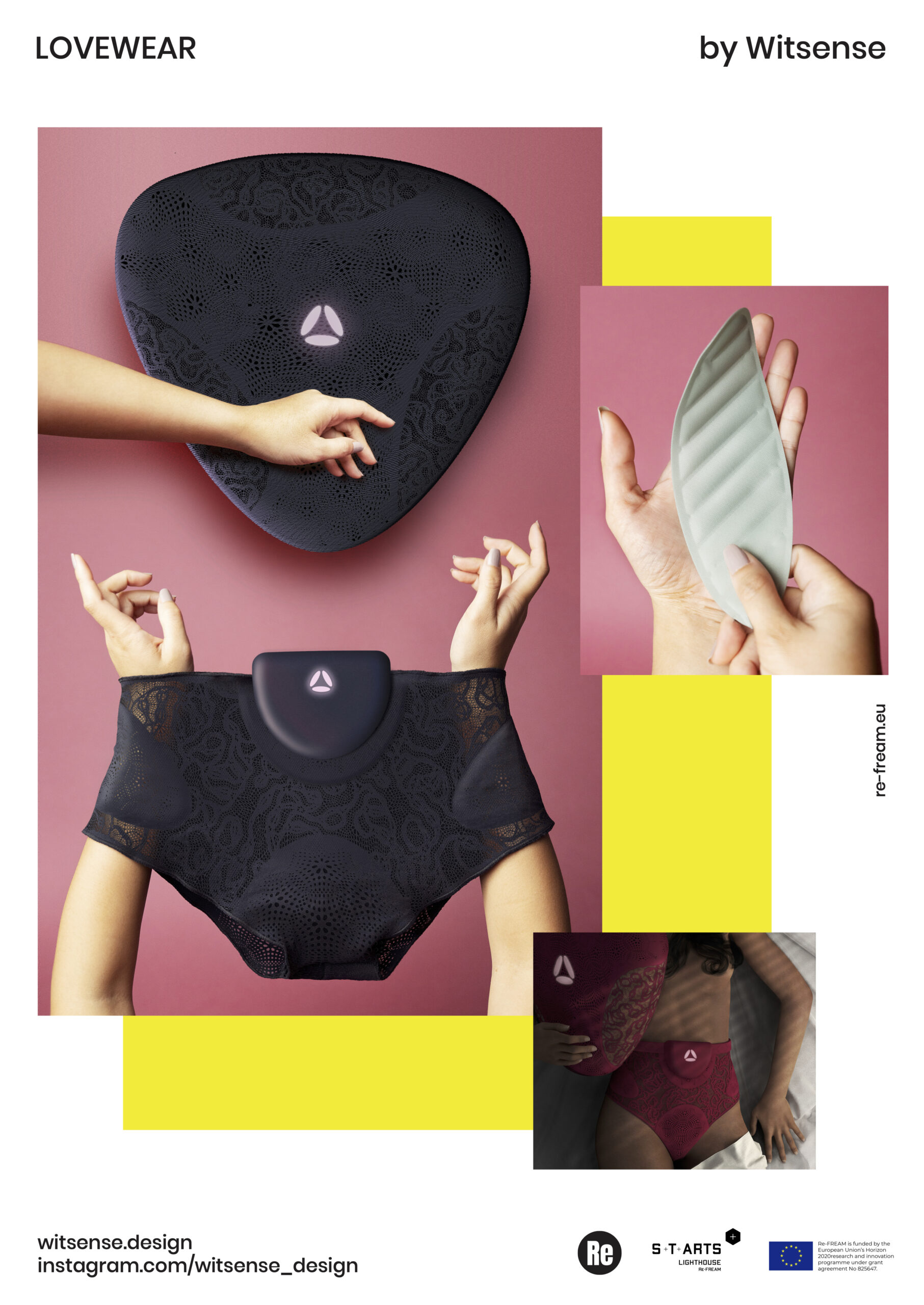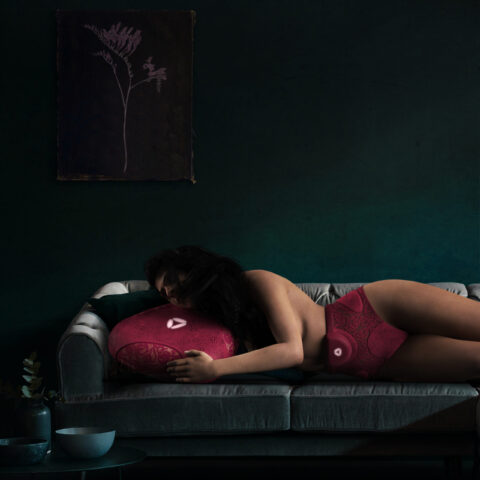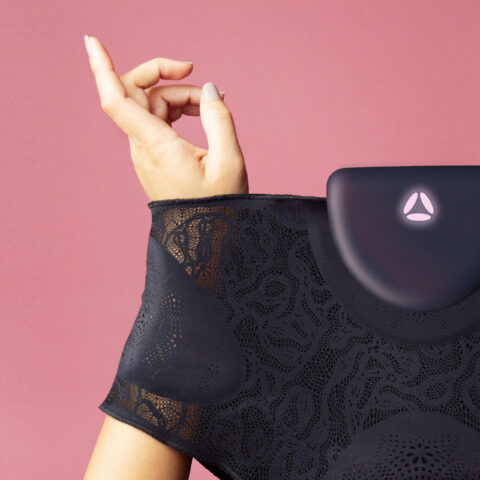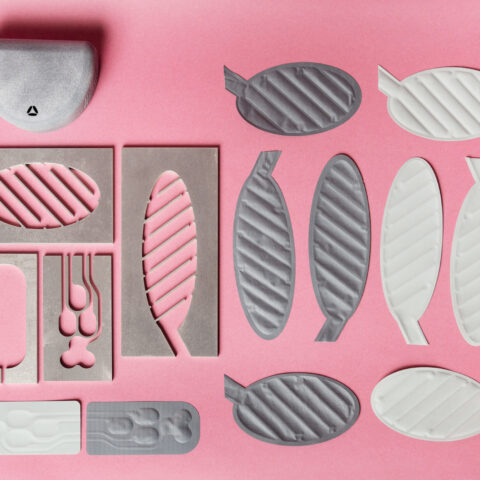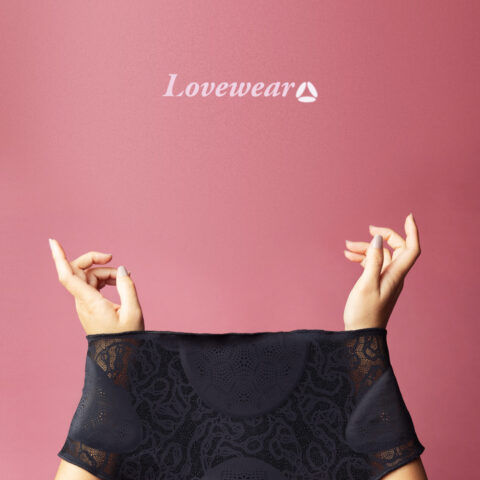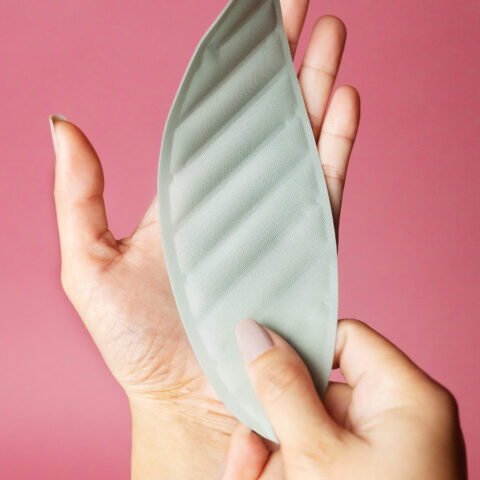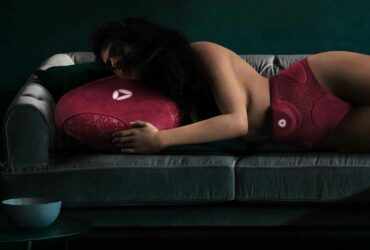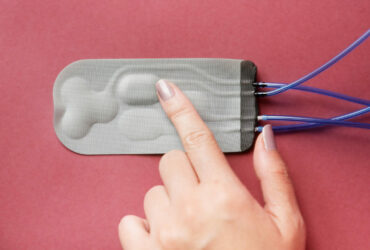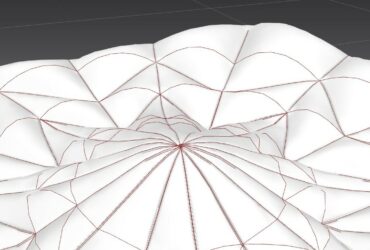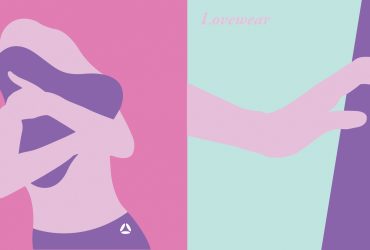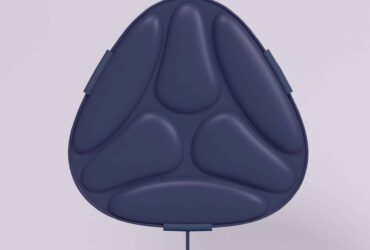Witsense’s Lovewear uses soft robotics to stimulate inclusive self-discovery, arousal and joy. The smart undergarments help people of all abilities to experience their bodies. While Emanuela Corti and Ivan Parati’s co-creation project aims to enhance intimacy, it also breaks taboos around sexuality. The project interweaves fashion and technology to amplify pleasure for inclusive needs and communities.
Inflatable inserts were embedded in the tube-shaped warp-knitted underwear. The knit textiles provided both stretchability and the possibility of seamlessly inserting the inflatables and components into the fabric structure. The Fraunhofer team provided support for producing study prototypes with different techniques, including the complex process of ultrasound welding on fabric, as well as invaluable expertise for materials selected for the inflatable parts.
Wearers activate and inflate the air-filled pockets through a connected ‘console’ pillow, which responds to pressure. They can cuddle and caress the cushion as a surrogate for human contact, or just explore its surface as they would explore their own body. Pneumatics were chosen to create a more natural, organic experience, beyond the conventional vibration stimulation. There is a certain poetry to inflatable elements as well, Parati explains: “when they inflate, they seem to come alive”.
The resulting wearable can be worn in the morning and activated any time of the day without additional help. A detachable device snaps on with magnetic attachments. Embedded pockets on hips, gluteus and vulva feature inflatable inserts which the wearer can activate with the console pillow. As maintenance is key for wearables and for sustainability, the modular design allows for the repair and the replacement of the inflatable pockets. The textiles with the inflatables can be completely detached from the electrical parts, which allows for the underwear to be washed like regular clothing in a washing machine. Other sustainable features include the use of recycled yarn, and the knitting of the textiles, which enables a no-waste production process.
Though a crescendo of racing heartbeats and palpable pleasure are a plus, the goal is not an orgasm, but a tool for self exploration and self discovery. Inclusive sexuality is often neglected in order to release carers and families from uncomfortable responsibilities, which pose moral and ethical questions. “Our aim to give back some dignity”, Parati explains, “because many people affected by certain conditions may have someone who look after them, but do not have a way to make sexuality part of their life”. The project encourages learning about and exploring sexuality, without shame and stigma. Lovewear seeks to improve quality of life through emotional and mental health. It represents a shift from the notion of ‘cure’ to the notion of ‘care’, where monitoring, treatment and therapies are unobtrusive and respectful of the dignity of the individual. Fashion and technology are used to both amplify and recontextualize sex, pleasure, and bodily engagement.
One of the most challenging parts of the project was the miniaturization of pneumatics and electronics. Yet most difficult part was the silence around the topic. To reach people for the survey and product testing, the team collaborated LoveGiver NGO in Italy. (www.lovegiver.it), as well as psychologist and sexologist Dr. Paola Tomasello, a board member of Lovegiver. The team also had to overcome their own timidity. “We do not usually design sex toys”, says Corti, “so we were kind of shy in the beginning to approach people, but the support of the psychologist made us feel more confident!”.
Though certain aspects – such as lubrication – could not yet be tackled in the time frame, the team built a foundation for future developments. One avenue revealed during product surveys was the desire for stronger sensations. Surveys also opened another avenue of future research: a product with different audiences, including seniors, and even sex education for teenagers.
The Project
Lovewear is a smart underwear that helps people of all abilities to self-explore and enhance their own intimacy and sexuality. Witsense wants to empower the wearer through a tactile experience achieved by soft robotics with inflatable inserts embedded in the underwear, triggered by the interaction with a connected ‘console’ pillow.
The wearer can hug, cuddle, caress, press this interface as a surrogate for human contact or just explore its surface as he would explore his own body, facilitating gestures.
Christian Dils, Fraunhofer IZM, about the project
“The Witsense team is strongly anchored in inclusive design. In this project, the focus of the co-research phase was on learning and recognizing current barriers and technological solutions, as well as user-oriented design for sensitive objects.
During the co-creation phase, the team stood out due to their know-how and idea creations for a new generation of soft actuators. In close cooperation with Aesun Kim and Fraunhofer IZM, numerous novel manufacturing concepts for soft actuators were investigated.
The results showed that with batch lamination of thermoplastic materials, fine and freely shaped channels can be fabricated for pneumatic actuation. An achievement of great interest for the industrialization of soft robotics applications.”
The Technologies
The co-creation team worked with adhesive bonding methods of the Fraunhofer IZM. The textile suitable Interconnection technology provided the mechanical and electrical interconnection of electronics modules into textiles circuits, using low temperatures.
The inflatables use thermoplastic elastomer substrates developed at the IZM, which can be easily laminated to almost any type of fabric. CLO3D software, though only reliable until a certain scale, was used for the prototyping process, and helped to establish the right proportions as the fabric patterns adjusted to inflation.
The Partners
The project leaders Emanuela Corti and Ivan Parati collaborated and worked within the Smart Textile Hub of Re-FREAM, including the scientific partner Fraunhofer IZM and Wear It Berlin. Material testing was provided by Empa.
The Artists
Witsense is the encounter between two designers experienced in inclusive design, Emanuela Corti and Ivan Parati, both lecturers at Ajman University, a leading institution in the United Arab Emirates, and Comftech a pioneering Italian wearable tech company specialized in medical grade smart garments.
Witsense aims to improve life quality of people with learning and developmental disorders and represents the shift from the notion of ‘cure’ to the notion of ‘care’, where monitoring, treatments and therapies are unobtrusive and respectful of the dignity of the individual. At the nexus with design, engineering, fashion and manufacturing, Witsense scouts viable solutions that can be adopted by people of any ability to face the overwhelming burden of contemporary living.
Follow witsense
